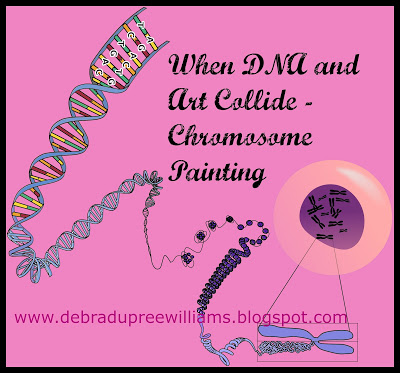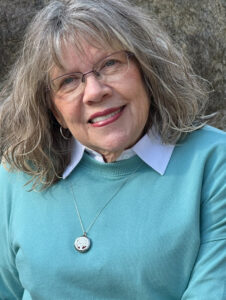When DNA and Art Colliide–Chromosome Painting
by Debra DuPree Williams @DDuPreeWilliams
Last week I went over the basics of DNA testing. As I said, I am not an expert. I just happen to be the person most people in my family go to for information. The likely reason for that is that they are only marginally interested in our ancestors at best. To me, they are an integral part of the person I am today. Even though I have never met the majority of my ancestors, I feel a deep connection to each of them.
But it isn’t just about the DNA. The largest part of learning about one’s ancestors is discovering their personal stories. My great-grandmother’s story impacted me so personally that I wrote my first novel, a cozy mystery, centered partly around her missing grave. To this day, we still have no clue where she is buried in spite of searching for her for over twenty years.
New Tool
When one is serious about finding the DNA link, there is a new tool to help you determine from which side of the family you inherited certain DNA. That is called chromosome painting. We discovered last week that we get half our DNA from our mother and half from our father. Chromosome painting is a way to discover from which parent’s family our DNA came.
I’m not going to pretend that I understand this well enough to explain it to you. At its core, it’s really rather simple, but it does require some basic knowledge. Far more than what I know at this point. It isn’t rocket science, but it would likely be beneficial to know who that one person in your family is who just may understand this.
I went to DNA Painter as that is what some of my cousins have used. There are other places to do chromosome painting. 23andMe is one such place. I found the video on DNA Painter to be pretty easy to follow.
Fine Points
Here are some of the points that I thought would make DNA Painter a good choice. You are able to share files with relatives. There is an area for taking notes so that you remember what you learned about that particular person on that chromosome. There is an edit function in case you make a mistake or you learn more or different information in the future. You may follow DNA Painter on Facebook or Twitter. If you Like their Facebook page, you will get updates from them. You can share your information privately and you can post it in read only mode.
Again, these are only a few of the features I found. There are many more I’m not including here. I suggest that you go to https://dnapainter.com/ and check out the video provided. Oh, I should say, this is a tool that was created by Johnny Perl. He is from the United Kingdom. I’m sure he’d appreciate our gratitude.
As with anything like this, proceed with caution. Make sure you are okay with their privacy practices.
Venture Forth
This is a bit complicated, but for those of you brave enough to venture forth, (I’m not sure that I fall into that category) you may discover cousins you never knew you had. And at the very least, you’ve had fun painting your chromosomes.
For further help in understanding the ins and outs of all things DNA related, check out Roberta Estes blog. She explains things far better than I can and she has posts about anything you could possibly want to know as it relates to DNA. Here is the link: https://dna-explained.com/
Have you tried chromosome painting? Did you find it easy or was it difficult? Did you find new information? Share your thoughts with us below.
Tweetable
When DNA and Art Collide – Chromosome Painting @DDuPreeWilliams (Click to Tweet)


The Conversation
When my husband retired, he did a search for his ancestors and found out some interesting things. He's still trying to find out where one of his grandmothers was buried,too.Very interesting – I love a good mystery!